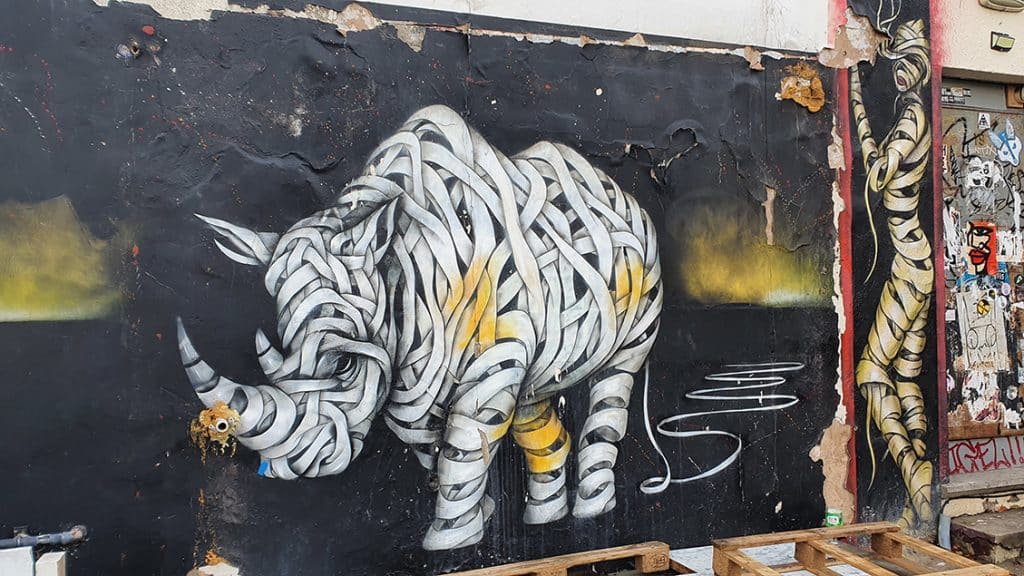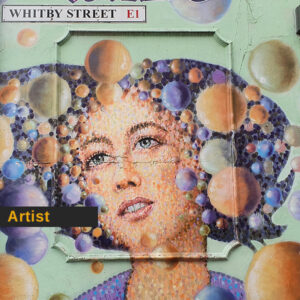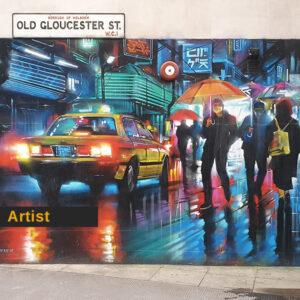
Paris is not only the Louvre and the Champs-Élysées – it’s also an experimental urban field where walls turn into canvases and bridges become open-air galleries.
Over the past decade, the city has developed a diverse, multi-voiced street-art scene that connects urban roughness with human sensitivity, spontaneity with large-scale municipal projects.
This post brings together the places and voices that make Paris a true center of street art – neighborhoods, walking routes, unique urban spots, and artists who tell one-of-a-kind visual stories.
Each section is a short preview of a full post filled with images and inspiration.
You can also explore an interactive street-art map that helps you locate interesting areas and navigate to nearby works around your trip.
Interactive Graffiti & Street art map of London
- Exposed to street art & graffiti in the different neighborhoods
- Street art is displayed both on the map and in the list
- Discover the most interesting neighborhoods in the city (street art wize)
- Add your favorite street art to the city route you planned in advance
- Use the street art map (Google Map) as the navigation map for all other attractions

A global model for large-scale urban art. Collaboration between the city, private galleries, and international artists has created a corridor of monumental murals along Boulevard Vincent Auriol and the adjacent side streets.
Beneath the Boulevard Périphérique, between massive concrete pillars, lies a semi-legal creative zone that draws street artists from all over Paris. Works are created over one another, collective sessions take place, and every style coexists – from lettering to 3D paste-ups. Together with Les Frigos and Lavo//Matik, they form an ecosystem of free expression, community gallery, and living cultural archive.
A village within the city: narrow lanes, painted doors, poetic and sometimes political works on tiny walls and power boxes. The perfect place to experience the “small-scale” spirit of Paris – direct dialogues between artists and the public.
A neighborhood of contrasts: street markets, immigrant communities, and ever-changing walls. The iconic Rue Denoyez remains the beating heart of experimental, community-driven street art.
Between historic architecture and chic boutiques, you’ll find stencils, mosaics, and paste-ups everywhere. The tension between past and avant-garde creates a dense, surprising art walk.
The same streets once walked by Toulouse-Lautrec and Picasso now host contemporary street art – stickers, stencils, and tributes to local icons, all in dialogue with mass tourism.
An open route stretching several kilometers from La Villette to the Stade de France: massive murals on bridges, warehouses, and industrial walls – ideal for cycling or a long urban walk.
In the city’s modern business district, street art finds a temporary multistory home: a large-scale exhibition that blends glass towers with wild creativity.
Once an occupied squat, now an official art center with open studios, painted staircases, and direct encounters with resident artists.
A 4.7-km elevated walkway that fuses greenery, architecture, and evolving street art. A peaceful route that tells the city’s industrial story through color and walls.
Stretching from northeast Paris toward Pantin and Aubervilliers, this broad canal offers endless walls of graffiti, paste-ups, and abstract compositions – perfect for a scenic stroll or bike ride.
The city’s poet of childhood: colorful, introspective characters that blend cultural identity, optimism, and social reflection.
Master of multilayered stencils: portraits of the “invisible” – homeless people, refugees, elders – bringing empathy and visibility to the public space.
The wall archaeologist: portraits carved directly into plaster and concrete – revealing memory rather than adding color.
A bold feminine voice: hybrid figures with four eyes and mustaches – challenging gender, perception, and public presence.
Realistic black-and-white stencils bursting with color: human portraits and messages about children’s rights and cultural identity.
Collages using real banknotes as “faces”: a poetic and political reflection on money, faith, and collective values.
Minimalist stencils of anthropomorphic animals with a red “THE END” mark – visual warnings about humanity and nature.
Monochrome portraits with a single dripping red heart – tributes to inspiring women and fragile human emotions.
An Italian-French duo covering walls with giant Smurf mosaics – playful, interactive, and nostalgic.
Pink-orange angels and babies illuminating dark walls – lyrical urban art balancing innocence and critique.
Geometric chaos layered in color: fragments of typography and rhythm forming dense, urban “maps.”
Among the artists featured in the Paris posts:
?????
























